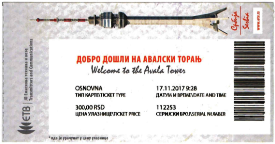Belgrade is the capital and largest city of Serbia. It is situated in the north-central part of the country at the at the confluence of the Danube and Sava rivers. The name (Beograd in Serbian) literally translates as “White city”. The location of Belgrade is where three historically important routes of travel between Europe and the Balkans converge; the route between Vienna and the Black Sea along the Danube River, the route running westwards along the Sava River towards the Gulf of Trieste on the Adriatic Sea and the route which runs southeast along the valleys of the Morava and Vardar rivers to the Aegean Sea. To the north and west of the city lies the Pannonian Basin which includes the Vojvodina region, known for its productive crops.
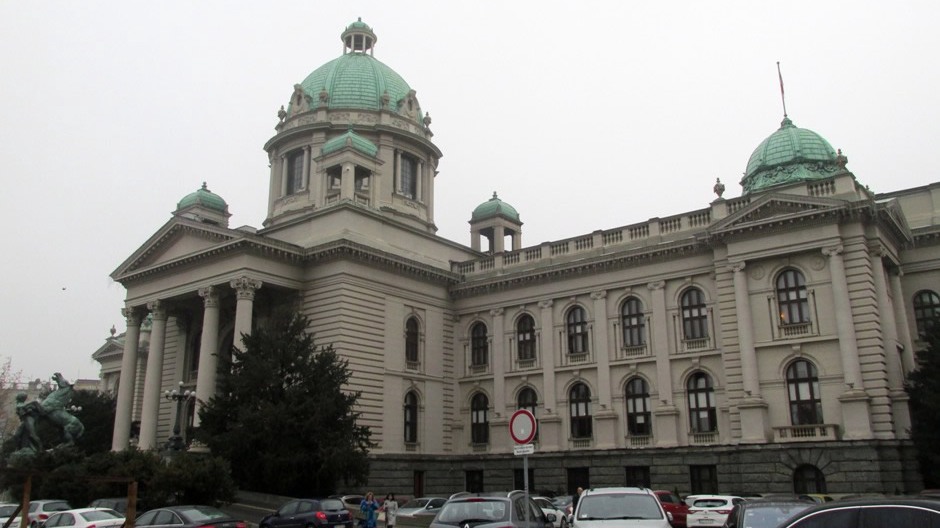
Above: House of the National Assembly of Serbia - the seat of the National Assembly of Serbia, located on Nikola Pašić Square in the city centre.
A brief history of Belgrade follows. Evidence exists of that Stone Age settlers inhabited the area. The city itself grew up around an ancient fortress on the Kalemegdan headland, which is bordered on three sides by the Danube and Sava rivers. The first known fortress to be built on the headland was in the 4th century BC by the Celts. This was known by the Romans as Singidunum. The fortress was destroyed by the Huns in 442 AD and the site went through various periods, being occupied by the Sarmatians, Goths, and Gepidae, before being recaptured by the Byzantines. It was later occupied by the Franks and the Bulgars, but by the 11th century became a frontier town of Byzantium. The site eventually came under Serbian rule in 1284 and in the year 1402, Despot Stefan Lazarević made it the capital of Serbia.
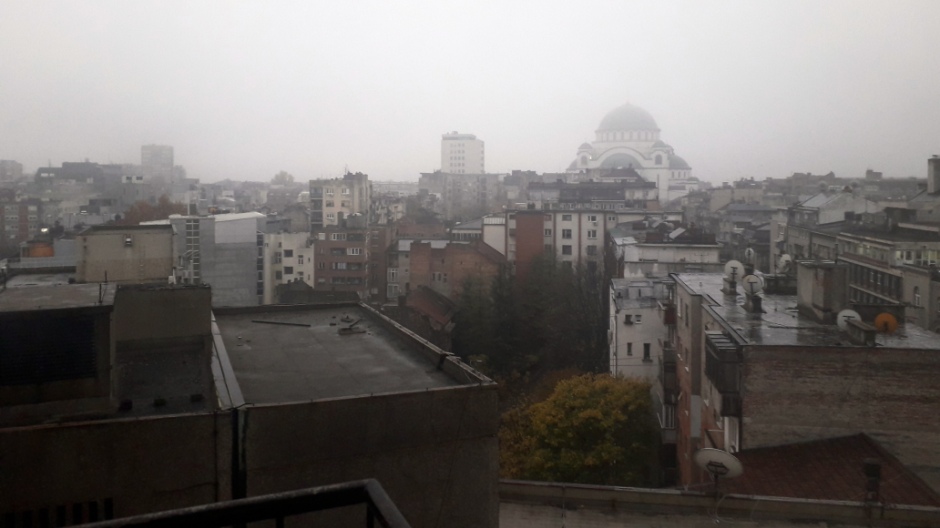
Above: View from Hotel Slavija on a damp November day. The climate here is continental, with cold winters and hot summers.
The city was besieged by Ottoman Turks in 1440 and from 1521, it was under their control, except for three separate periods of occupation by the Austrians (between 1688 and 1791). During the time of rule by the Ottoman Turks, Belgrade was a busy centre of commerce. A Serbian uprising in 1804 led to the city becoming the capital of Serbia again from 1807 to 1813. However, the Turks recaptured it. Once again, though, in 1867, the Serbs were given control of the citadel and the city became the capital of Serbia. From 1921, Belgrade was the capital of the three successive Yugoslav states. In the years after World War II, the city saw a rapid growth, primarily due to the shift in people moving from rural areas due to industrialisation. Industries which grew up here include motor and machinery manufacturing, as well as the production of a wide variety of other goods. In more recent times, the city suffered damage from the NATO bombing of Yugoslavia in 1999, during the during the Kosovo War. Most of the city’s 1.67 million inhabitants are Serbs, with non-Serb groups including primarily Croats and Montenegrins.
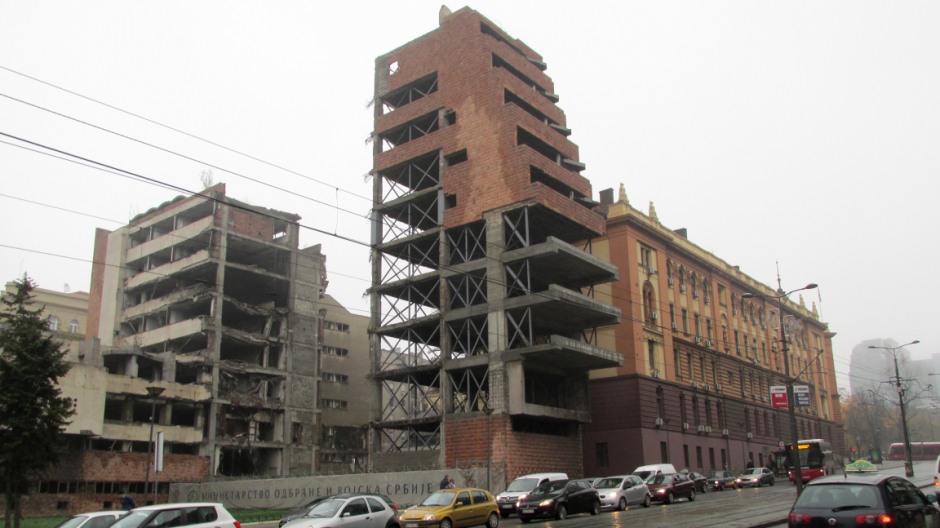
Above: Damage still visible from the NATO bombing of the city in 1999.
Belgrade is Serbia’s largest commercial centre and is connected by various international railway line, as well as primary roads and river vessels. West of the city at Surčin lies the international Belgrade Nikola Tesla Airport. As the city developed, it grew southwards and south-eastwards from the old fortress of Kalemegdan over hilly terrain. On a plain west of the old city was built the district of Novi Beograd (New Belgrade). The fortress itself is now a historical monument and one of the main tourist sites; more information and photos of Kalemegdan Fortress is featured further down this webpage. The city is also the home to a variety of cultural and educational institutions, as well as government and diplomatic buildings. Of the many museums and galleries, the National Museum dates from 1844 and is the oldest in the city. The thumbnail gallery below contains 128 photos mainly from a walk around the city centre (click on any image to enlarge):
Three of the main sites to see in Belgrade are featured below; the aforementioned Kalemegdan Fortress, the Tesla Museum and the Avala Tower, the latter containing a link to a separate page featuring a more in-depth look. Also mentioned below, with a thumbnail photo gallery is a visit to the Genex Tower – not so much a tourist attraction, but somewhat of interest to anyone with an interest in Brutalistic architecture. Other sites of interest in Belgrade (some of which can be seen in the photo gallery above) include the rich collection of historic areas and buildings in the city themselves; the National Museum and adjacent National Theatre, Skadarlija (a vintage street, an urban neighbourhood and former municipality of the city), the Zemun municipality, squares (including Nikola Pašić Square and Terazije - the central town square), Knez Mihailova Street, the Parliament, the Old Palace and the Church of Saint Sava. Further afield from the city centre, also of interest to the visitor are the Gardoš Tower (a memorial tower located in Zemun), the Beli Dvor (‘White Palace’) - home of the Karađorđević’s, the royal family from a relatively short-lived dynasty and in the neighbourhood of Dedinje, and also Josip Broz Tito's mausoleum, known as the House of Flowers and located in the grounds of the Museum of Yugoslav History, also in the neighbourhood of Dedinje. The city is a pleasure to walk (or stroll) around, with many parks, monuments, cafés, restaurants and shops. Driving around can be a bit hectic at times, though, as can be parking.
Kalemegdan Fortress
As mentioned above, the Kalemegdan Fortress is sited at the confluence of the Danube and Sava Rivers. Dominating the local terrain, this formidable fortress was one of the most fought-over strategic points in southeaster Europe.
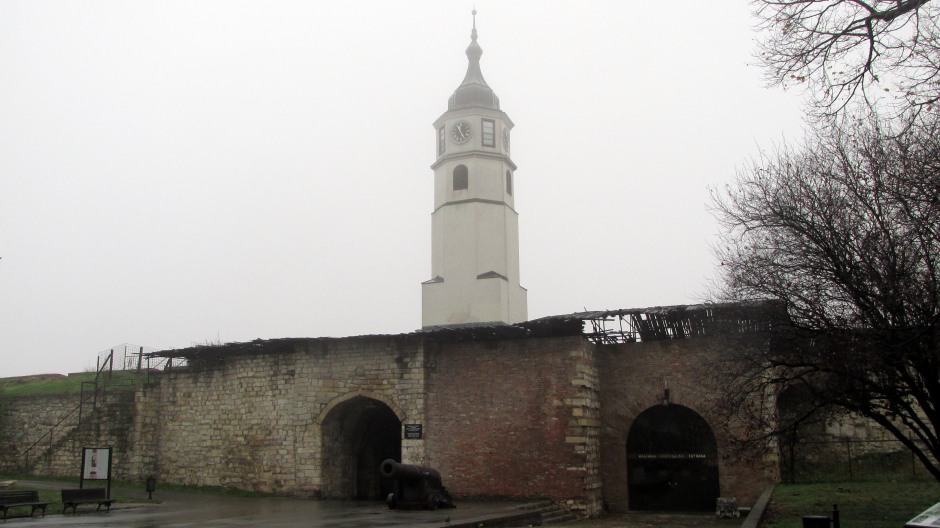
The fortress was first occupied by the Celts, then the Romans, followed by the medieval rulers of Serbia and then expanded during times of occupation by the Ottomans and by the Austrians; the fortress slowly developed into an extensive complex of buildings blending various styles of architecture. Today, the fortress and it’s immediate surroundings form Belgrade’s most popular park, offering panoramic views of the Danube from atop its bastions. Sites to look out for during a visit to Kalemegdan Fortress include Kula Nebojša (Nebojša Tower) - a 15th century hexagonal structure also known as the ‘daredevil tower’ which was used as a dungeon under the Ottomans, The Victor (a column with a statue on top dating from 1928 which was constructed to honour Serbian victories in the Balkan Wars of 1912-13 and World War I), The Military Museum, the Chapel of St Petka (a chapel dating from 1937 on the site of a sacred spring said to have healing powers), a number of gates, including the massive 15th century fortified Zindan Gate, the Monument of Gratitude to France, the Belgrade Planetarium and Sahat Kula (an 18th century clock tower which was built by the Austrians). A more comprehensive list of sites at Kalemegdan Fortress may be found by clicking on the following external link Here (interactive map of the fortress on the Belgrade Tourism Website). More photos of the Kalemegdan Fortress can be viewed in the thumbnail gallery below:
The Nikola Tesla Museum
The Nikola Tesla Museum is located in the central area of the city at Krunska 51. As the name suggests, it is dedicated to honouring and displaying the life and work of the famous Serbian-American inventor, electrical engineer, mechanical engineer, physicist Nikola Tesla.
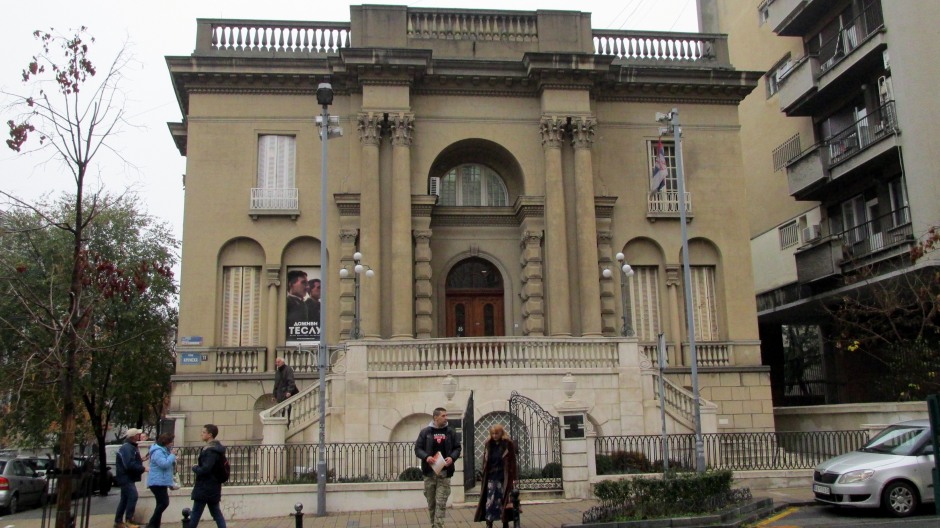
Tesla was best known for contributions to the design of the modern Alternating Current electrical supply system. The museum has been housed since 1952 in a residential villa (built in 1927). Contained within the collection are some 160,000 original documents, more than 2,000 books and journals, and a huge number of exhibits, including technical equipment, items relating to his life and times, photographs, plans and drawings and the like. The vast collection at the museum was brought over from America (where Tesla emigrated to, to conduct his ground-breaking work) to Belgrade in 1951; this was made possible due to the efforts of Sava Kosanović, Tesla's nephew and closest relative and his attorney, Philip Wittenberg. At the rear of the museum is a small theatre and not to be missed is the video (available in English, as well as Serbian) which is followed by a live demonstration of some of the original equipment Tesla developed and worked with during his lifetime. Also not to be missed in the museum is a spherical Urn containing Tesla’s ashes, this the building is not just a museum, but also a memorial/mausoleum to the great man. The memorial museum represents the historical work carried out by Tesla that changed the world, in terms of electrification and the future of technological advancements in this field. The Nikola Tesla Archive was inscribed on UNESCO's Memory of the World Programme Register in 2003. Photographs from a visit to the Nikola Tesla Museum can be seen in the thumbnail gallery below (click on images to enlarge):
Avala Tower
The Avala Tower is a 205m (672 feet) tall telecommunications tower located on a mountain outside the city centre of the same name. The original tower was completed in 1965, but destroyed in 1999 during NATO bombings of Yugoslavia. However, this structure, the tallest tower in the Balkans (at the time of writing) and one of national pride, was reconstructed from the end of 2006 and officially opened again in 2010. For more photos and text about the Avala Tower, click on the photo above (or the link Here). The webpage on this link is part of a separate section on this website concerned with a selection of communications towers visited by the website’s author.
Genex Tower
Finally, not so much on the main tourist trail, a visit was made to see the Genex Tower, a 35-storey multiple-use Brutalisic building, situated in the New Belgrade municipality, roughly four miles northwest of the city centre. Designed in 1977, the building, officially called Western City Gate, Comprises two main towers, connected by a two-storey sky-bridge and revolving restaurant at the top. The taller of the two towers is residential, whilst the second tower is for business use, having formerly been occupied by the Genex Group, which gave rise to the whole building’s popular name. The structure resembles a large high-rise gate, its appearance designed to greet people as they arrive in the centre of Belgrade from the west. Surrounding Genex tower are a large number of much lower rise apartment buildings, many of which appear to have been influenced heavily by the works of Swiss-French architect Le Corbusier.
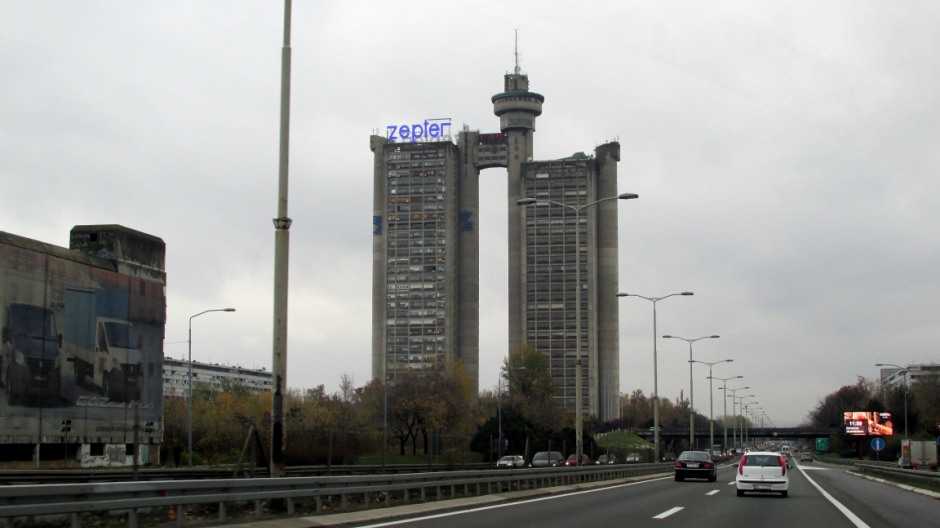
The reasons for the visit were due to the website author’s personal interest in this particular style of architecture. The building is sometimes compared to London’s Trellick Tower (designed by Erno Goldfinger). Not only is Trellick Tower of the same style, it also has the form whereby it’s service tower containing lifts, stairs, pipes, and so forth, stands to the side of the main block, topped by an unusual structure jutting out. It is quite possible that Trellick Tower inspired the Serbian architect of Genex Tower (Mihajlo Mitrović), as it was completed 8 years earlier, in 1972.
For more information on Brutalistic architecture, click on the link Here and a rather interesting account of a stay in the Genex Tower may be found on the link Here (external webpages).
[Photos: November 2017, Text: December 2017]
References and Further Reading
1. In-Situ Literature and Information Boards
2. Belgrade on Wikipedia
Here
3. Mitchell, Laurence. (2005). Serbia. Chalfont St. Peter: Bradt Travel
Guides.
4. Willis, Matt. DK Eyewitness Travel Guide Serbia. DK
Publishing.
Back to Top
